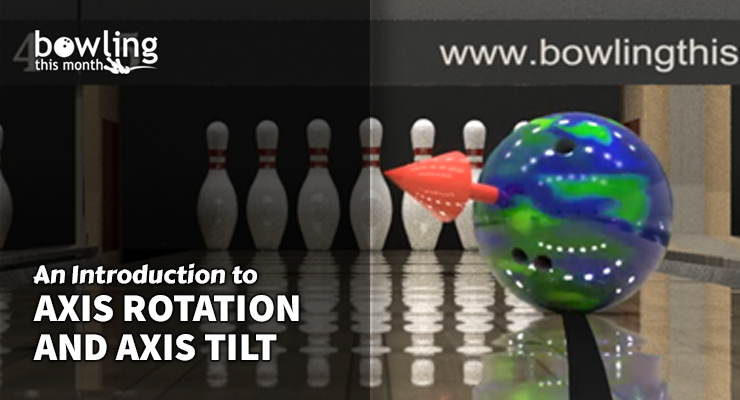Almost every day, I feel like I see or hear something that is completely incorrect about axis rotation or axis tilt. Sometimes, people just mix up the two terms and say “tilt” when they should have said “rotation.” Other times, I see people completely misunderstand the effect that axis rotation and axis tilt have on the bowling ball. And, other times yet, I see people very inaccurately describe why axis rotation and axis tilt affect the ball the way they do.
To be fair, I should say that this can be a difficult topic. I remember spending many, many years being confused myself about the mysteries of ball roll, and I never could find answers that satisfied me. As I look back, it’s easy to see why: vague definitions, misinformation, and completely invalid explanations—even though always very well-intentioned—are unfortunately the norm when it comes to this topic.
The goal of this article is to clear up whatever confusions you might have related to axis rotation and axis tilt. We’ll start by defining what axis rotation and axis tilt are, in hopes that you will never mix them up again. We’ll then cover how you can measure your own axis rotation and axis tilt angles. This can be an important first step in knowing whether or not you have a problem that deserves some attention. And, finally, we’ll go in-depth on how and why axis rotation and axis tilt affect the bowling ball as it travels down the lane, hopefully clearing up some serious misconceptions along the way.
What are axis rotation angle and axis tilt angle?
When a bowling ball is released, a certain type of “rotation” is created: as the ball leaves the bowler’s hand, it rotates about a specific axis, and it rotates about that axis at a specific speed. The speed of the ball’s rotation is its rev rate. The axis the ball is rotating about is set by the bowler’s axis rotation angle and axis tilt angle.
Axis rotation angle
In very simple terms, axis rotation angle can be thought of as a measure of how much “side roll” a bowling ball has. Slightly more technically, axis rotation angle is a measure of how the ball’s axis of rotation is oriented relative to its direction of travel, when viewed from the top looking down:
The red arrow represents the ball’s axis of rotation. The black arrow represents the ball’s direction of travel. In this example, the angle between the two arrows is 90 degrees. This corresponds to 0 degrees of axis rotation.
In the above image, the ball’s axis of rotation is represented by a red arrow, and its direction of travel is represented by a black arrow. Note that the angle between the two arrows is 90 degrees. This corresponds to 0 degrees of axis rotation. This is what you would get, for example, if you pushed a ball down a ramp onto the lane, or if you came straight up the back of the ball with your fingers ...
This article is only available to Bowling This Month subscribers. Click below to get instant access to this article and all of our other premium instructional content.
Subscribe to Bowling This Month
Already a Bowling This Month subscriber? Click here to log in.
